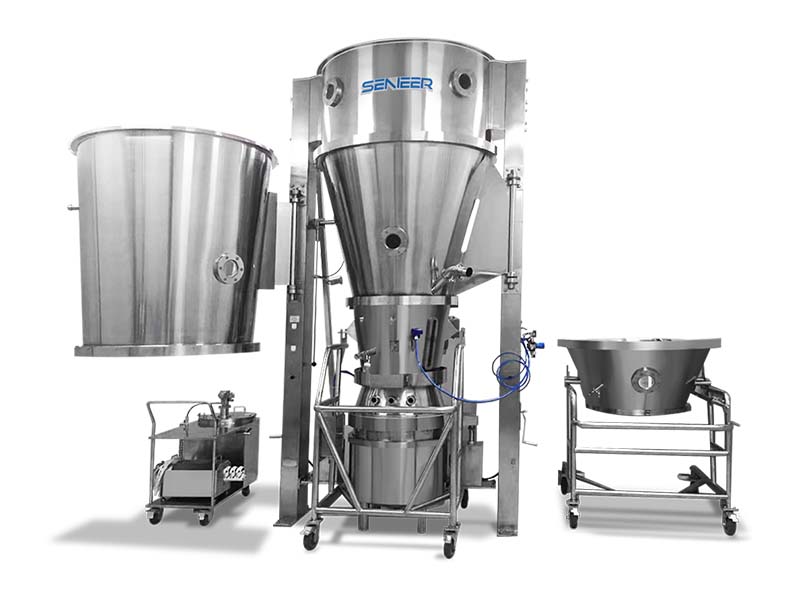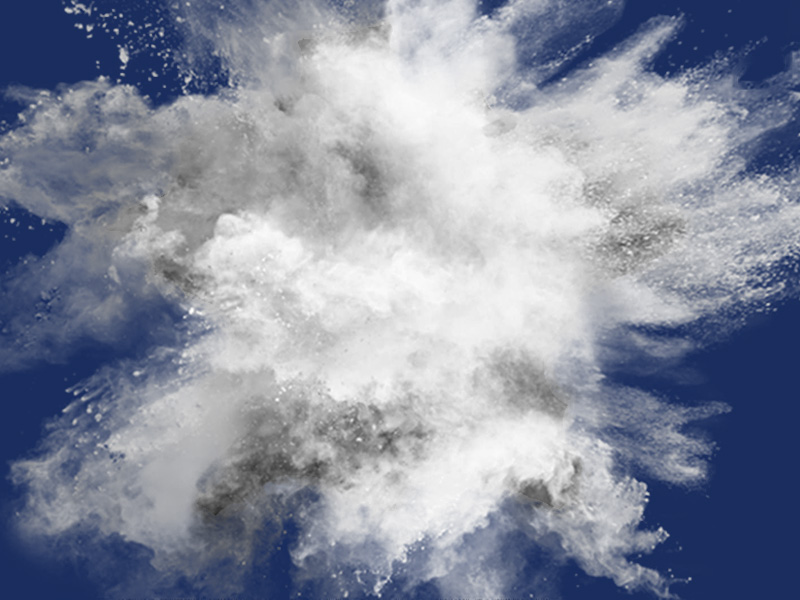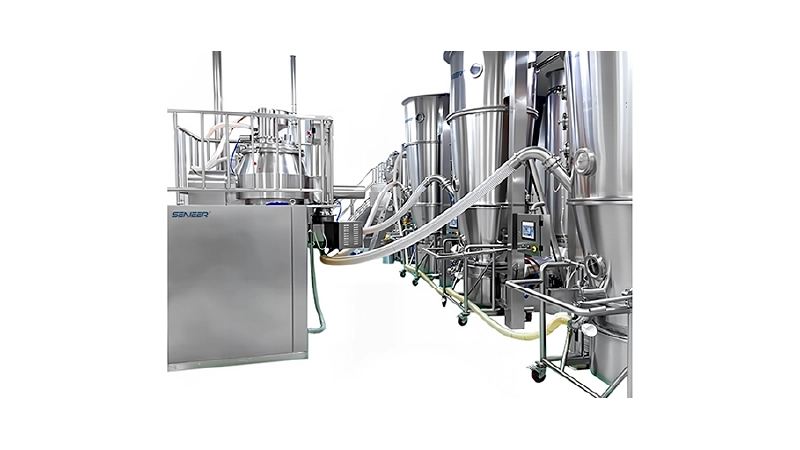Key Points Of This Chapter
This chapter focuses on the potential risks in the use of fluidized beds, and mainly explains some solutions from the perspective of explosion prevention and cross contamination prevention.
According to the characteristics of different raw materials and auxiliary materials, when designing a fluidized bed process, risk assessment should be done in advance to ensure that there are reliable measures to prevent secondary injuries or contamination when accidents occur.
01 Introduction
From the research and development data, some basic understanding of the process and the ingredients to be processed can be obtained. As the process scales up, it is important to describe how the product is handled in the fluidized bed unit operation, and the process must be recorded and understood so that environmental health and safety professionals can determine the potential exposure pathways of the equipment. In addition to the tasks performed, it is important to describe the characteristics of each product. Knowing the products involved, the speed at which the tasks are performed, and the operating conditions such as temperature, pressure, airflow, Kst (explosion severity) value of the products to be handled can give you a clear understanding of the factors affecting potential operator exposure.
Fluidized bed processes handle large amounts of air, which has the potential to explode in the presence of fine particles. Dry powders can be ignited by sparks generated by electrostatic discharge, which occurs naturally in moving air and powder agglomerates. For an explosion to occur, three conditions must be present: an ignition source, a combustible material, and oxygen. During an explosion, oxygen reacts with the combustible material, releasing heat and gases. If a dust explosion occurs in free space, a fairly large fireball will be produced. If a dust explosion occurs in a closed container, the pressure will rise suddenly, which is mainly determined by the following factors: dust type, dust size, dust/oxygen ratio, turbulence, pre-compression, temperature, container shape, ignition source.
This danger may increase when flammable solvents are used. If sufficient ignition energy (static charge) is introduced, an explosion may occur inside the processor. In order to control explosions caused by these dusts or flammable solvents, fluidized bed designs are usually designed to withstand 2 bar pressure, which means that the equipment must withstand a 2 bar pressure difference for a short period of time. 2 bar fluidized bed units are equipped with explosion valves to release pressure once pressure begins to accumulate inside the processor. Usually the explosion valve is located on the vertical or horizontal part of the outside of the filter housing and leads directly to the outside. This explosion valve design can be used for pressure accumulation as low as 0.06 bar.
The 2 bar vent design panels are gasket sealed so that normal fluid bed operation is not affected. It is accepted practice to have a production unit with 2 bar pressure surge integrity; however, cleaning of the gasket area around the explosion valve is always difficult. In order to avoid material exposure to the outside, a suppression system is used to contain possible overpressure fronts and prevent them from leaving the unit. The suppression system consists of low pressure sensors located inside the processor. Once a preset pressure level (usually 0.1 bar) is reached inside the processor, these sensors trigger a series of fire extinguishers (containing ammonium phosphate). When using this system, the external pressure relief valve must be closed to ensure the proper operation of the pressure sensor.
If the installation site does not have the possibility of roof ventilation or outdoor ventilation, or if the process involves highly active compounds that cannot be ventilated to the outside to prevent explosion, a pressure resistance of 10-12 bar is required, as these compounds require the system to be completely sealed.
Most pharmaceutical dust explosion tests have shown that the Kst value (explosion severity) remains unchanged when the overpressure reaches 9 bar at an explosion velocity of 200. In a 10 or 12 bar unit, the explosion occurs inside the unit. A 10-12 bar design unit does not require any explosion panels or gaskets, which eliminates the cleaning issues of gaskets and explosion panels.
For non-solvent formulations in fluidized bed processors, it is not necessary to isolate on the inlet side, as the fluidized screen of the dryer acts as a mechanical barrier to the propagation of a deflagration. However, isolation is required on the outlet side. For solvent-based formulations, isolation on both the inlet and outlet sides is necessary.

In 1994, the European Parliament issued an ATEX directive aimed at harmonizing the laws of the member states regarding equipment and protective systems for use in potentially explosive atmospheres. Since July 2006, organizations in the European Union must follow the directive to protect employees from explosion hazards in areas with explosive atmospheres. The name ATEX comes from the French title of Directive 94/9/EC: Appareils destinés à être utilisés en ATmosphères EXplosibles. The employer must demarcate areas where hazardous explosive atmospheres may occur. The classification of a particular area and its size and location depend on the likelihood of an explosive atmosphere occurring and how long it would last if it did occur.
Areas classified as Zones 0, 1, 2 (for gases-vapors-mists) and Zones 20, 21, 22 (for dusts) must be protected from effective ignition sources. Equipment and protective systems used in zoned areas must comply with the requirements of this directive. Zones 0 and 20 require Class 1 marked equipment, Zones 1 and 21 require Class 2 marked equipment, and Zones 2 and 22 require Class 3 marked equipment. Zones 0 and 20 are the areas with the highest risk of an explosive atmosphere. All fluid bed processor manufacturers in Europe must comply with this directive. In North America, the most widely used classification systems are defined by NFPA (National Fire Protection Association) Publication 70, NEC (National Electrical Code), and CEC (Canadian Electrical Code).
They define the types of hazardous substances that are present or may be present in the air in amounts sufficient to create explosive or ignitable mixtures. NFPA establishes zone classifications based on classes, divisions, and groups, which combine to define the hazardous conditions in a particular area. When solvents and powders are used in production areas, the area classification is designated as Class 1, Class 2. For US regulations, refer to NFPA Regulations and Guidelines. It is the responsibility of local inspection authorities to define the classifications, divisions and groupings for specific areas. Each country has developed its own system to manage risks to personnel, property, production, the environment and ultimately the company’s reputation.
02 Solvent Safety
Special attention should be paid when workers are exposed to toxic solvent vapors and highly active compounds as airborne dusts. During various production operations, workers may be exposed to solvent vapors and highly active compounds, which need to be identified, evaluated and controlled to ensure workers are protected. Engineering controls are the preferred way to control these risks due to their inherent effectiveness and reliability. Closed process equipment and material handling systems prevent worker exposure, while local exhaust ventilation and personal protective equipment (PPE) supplement these measures. Enhanced facility and process controls are required to control highly toxic solvents (benzene, chlorinated hydrocarbons, ketones) and highly active compounds. Positive pressure respirators (powered air purification and supplied air) and personal protective equipment are required when handling and processing highly toxic solvents and highly active compounds. Of particular concern are operations that generate high concentrations of solvent vapors (synthesis, granulation and tablet coating) and dusts (drying, grinding and mixing). Lockers and showers, decontamination measures and good hygiene practices (washing and showering) are necessary to prevent or minimize the effects of worker exposure inside and outside the workplace.
03 Safety Precautions
When handling solvents, appropriate precautions should be taken and risk assessments should be performed. The following are some common sense to remember when making solvent solutions for adhesives and handling granulation steps in the fluidized bed.
(1) Only use, handle and store as little as possible.
(2) Conduct risk assessments to identify and minimize the possibility of explosive environments when handling and using flammable liquids.
(3) Carry out production in different areas according to safety regulations.
(4) There should be adequate ventilation where flammable items are placed, used or stored.
(5) All obvious sources of ignition should be removed from storage and handling areas.
(6) Electrical equipment must be safe when used in designated areas or must be safe when used in this area.
(7) Nylon lab coats are not used due to potential static electricity problems.
(8) All flammable liquids should be placed in appropriate covered containers and stored in clearly marked barrels or cabinets away from other processes and storage areas.

(9) Everyone knows the emergency procedures in the event of a major release of flammable liquids – extinguish all flames and heat sources, do not turn on or off electrical appliances, get out and stay outside.
(10) All tanks, pumps, and mixers should be grounded.










